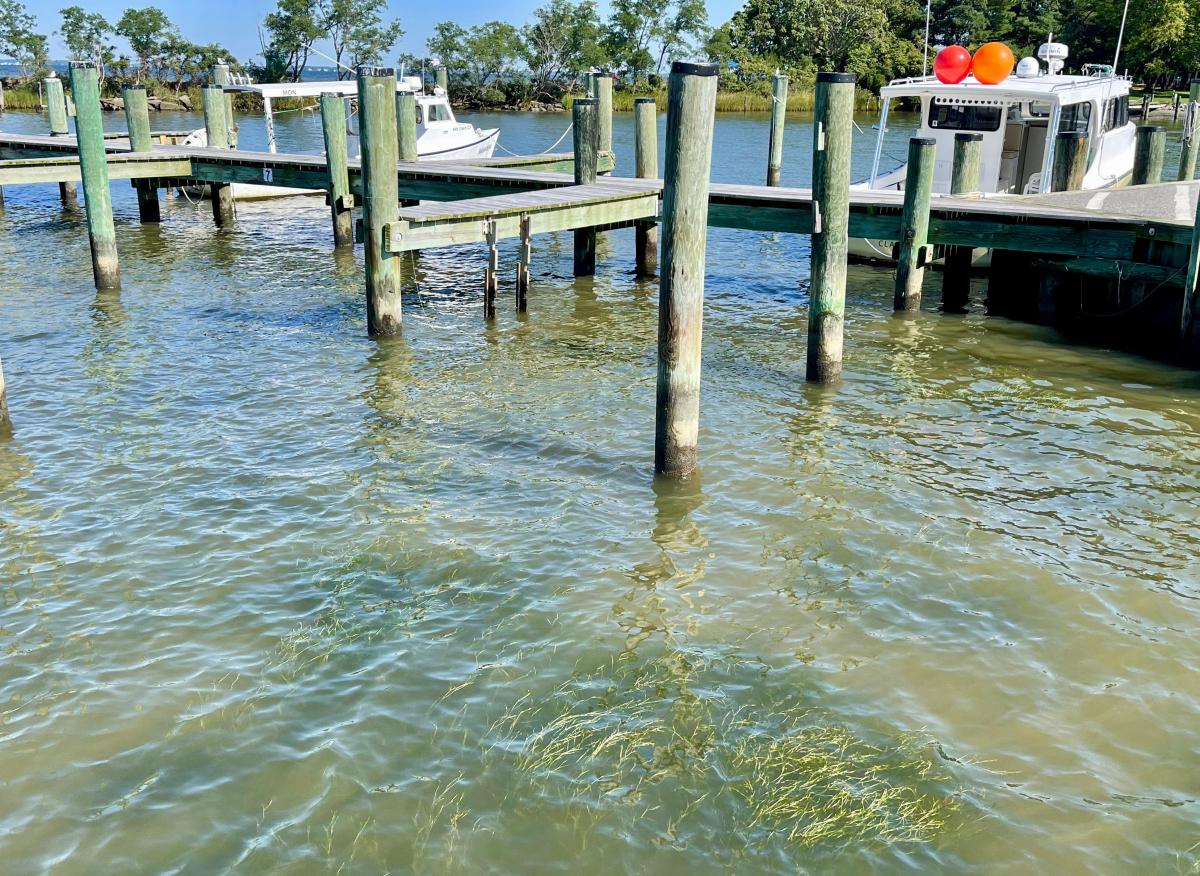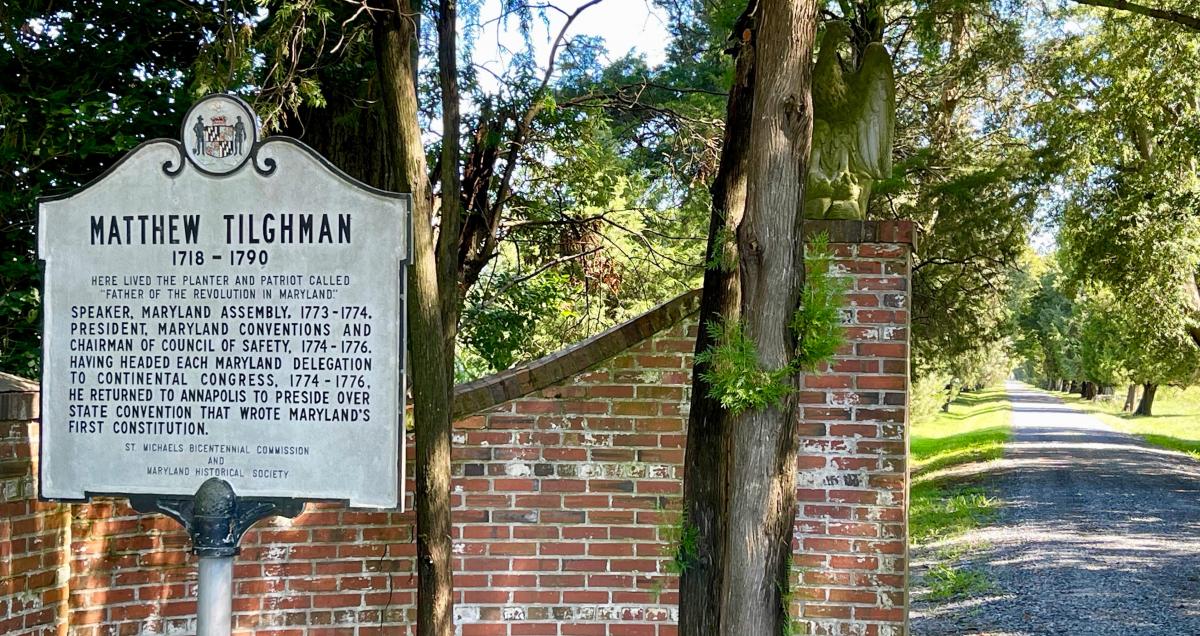No hills obstructed our views; there are no hills due west of Easton in this crenellated peninsula riddled with necks and creeks and ending with the island of Tilghman where Choptank River and Chesapeake Bay meet.
Drying fields of corn, with morning glory vines climbing stalks to show off their delicately blue mid-September flowers, flanked our back-country ride. We passed a few residents quietly weeding patches of lillies and tending borders of late-season roses as we eased into Claiborne. Roadside stands featuring red tomatoes, yellow squash, green cucumbers and striped watermelons added color to the scene.

The heavy, cable-banded pilings at the end of the public road in Claiborne are all that remain of the Claiborne-Annapolis Ferry.
A few small cars parked along the road that once led to the Eastern Shore terminus of the Claiborne-Annapolis Ferry brought a handful of families for a holiday outing at the small beach and fishing point nearby.
They were a far cry from the millions of vehicles and foot passengers that made their way across the Delmarva Peninsula in the first half of the 20th century from Maryland’s Western Shore to the ocean beaches via the ferry. In the decades leading up to completion of the first bay bridge in 1952, ferry traffic grew steadily. The ferry company constructed another terminal at Matapeake on Kent Island in the later years of its bay crossings to serve the eastbound Annapolis traffic. That siphoned off most of the Claiborne terminus traffic, even though a Claiborne to Kent Island ferry connection was added with construction of a terminal at Romancoke.

Healthy stands of submerged aquatic grasses in the Claiborne harbor help oxygenate Chesapeake Bay waters and provide habitat for a variety of marine creatures including crabs and rockfish.
The 1952 opening of the bay bridge effectively ended Claiborne’s ferry era. Heavy timber pilings bound with thick wire cables and the paved ramp where vehicles once boarded and exited the ferries are the last evidence of that era.
A few picnic tables overlooking the Claiborne cove and launching ramp, at the entrance to Eastern Bay, provided a good place to take a break from the bicycles and bask in the clear sunshine of the early September weather.

This historical marker announces the entrance to the privately owned ancestral home of one of Maryland’s most prominent Revolutionary figures.
Another narrow public road in Claiborne ends at the centuries’-old, tree-lined entrance to Rich Neck Manor. An historical marker there explains that this was once the home of Matthew Tilghman, one of Maryland’s most notable Revolutionary figures.
The heavy-metal, raised- letter marker – included in a photograph here – relates Tilghman’s prominent role in the Revolutionary movement as he made his way back and forth across the Chesapeake from the family’s ancestral home near Tilghman Point for pivotal deliberations in Annapolis.
Those into the sanity-enhancing qualities of mindfulness sometimes allude to a piece of Taoist philosophy stating that the past is frozen, the future is uncertain, and all that we really have is right now. That came to mind as we peered down that long lane, contemplating its countless events of the past and its unknowable future in this ever-changing world.
Dominant, however, was the serenity of the moment in the quiet of that country road with a few Vs of resident Canada geese flying low overhead.
Dennis Forney grew up on the Chester River in Chestertown. After graduating Oberlin College, he returned to the Shore where he wrote for the Queen Anne’s Record Observer, the Bay Times, the Star Democrat, and the Watermen’s Gazette. He moved to Lewes, Delaware in 1975 with his wife Becky where they lived for 45 years, raising their family and enjoying the saltwater life. Forney and Trish Vernon founded the Cape Gazette, a community newspaper serving eastern Sussex County, in 1993, where he served as publisher until 2020. He continues to write for the Cape Gazette as publisher emeritus and expanded his Delmarva footprint in 2020 with a move to Bozman in Talbot County.
Photos by Dennis Forney



William S Dudley says
I enjoyed virtual bicycle trip through our beautiful tidewater countryside and the historical musings along the way, but I can’t say as much for the quotation from Taoist philosophy. The “present” is not all we have to contemplate and the “past” is past but really isn’t “frozen.” The past is malleable depending on how we and others write about it and relive it. The past is subject to reinterpretations. The Taoist view of the future is dismal and uninspiring; its message is that we should leave it alone since it is uncertain. It seems to sell out the future as not being worthwhile to imagine or anticipate with excitement or curiosity. To the contrary, the future contains our hopes, expectations, something to shape for our destinies.